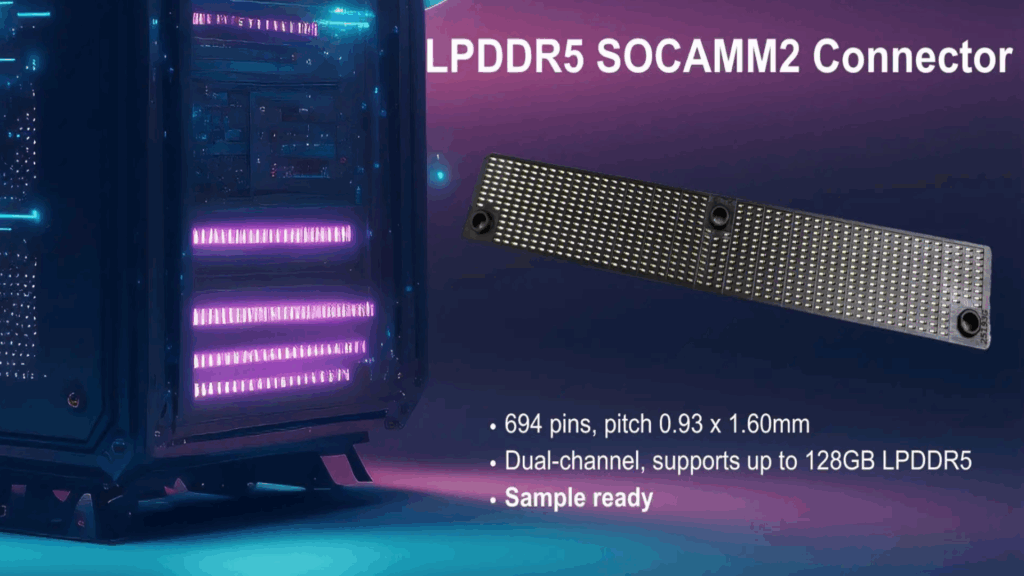- Nvidia scrapped Socamm 1 after repeated mistakes in catering to expectations
- SOCAMM 2 promises faster transfer rates reaching 9,600 mt/s performance
- LPDDR6 Adoption Discussions Signal Scalability In addition to the current Socamm 2 modules
Nvidia has left her past efforts to commercialize socamm 1 following repeated technical problems and is now fully focused on Socamm 2, the reports have claimed.
The first version was placed as an alternative with low power, high-capacity memory for AI servers, but delays and decline of design prevented it from getting traction.
Now an Industry Insider told A news (Originally in Korean), “Nvidia initially planned to introduce Socamm 1 within the year, but technical problems stopped the project twice and prevented any actual large orders.”
A shift in performance and design goals
This reset means that Samsung Electronics, SK Hynix and Micron all start on the same foot with the second generation of design.
Socamm 2 maintains the removable module form factor with 694 I/O gates, but increases the transfer rate to 9,600 mt/s compared to the previous 8,533 mt/s.
In practice, this means to system bandwidth that rises from approx. 14.3 TB/S to approx. 16 TB/SI Blackwell Ultra GB300 NVL72, a platform already tied to the best GPU discussions in data center contexts.
Nvidia’s dependence on LPDDR5X continues for now, although discussions about the adoption of LPDDR6 suggest that the format is designed with long -term scalability in mind.
Despite these upgrades, the module consumes still less power than standard dram-based RDIMM, a requirement that needs validation under real server workloads.
The first generation of Socamm modules was made of micron only, creating a single point of dependency that raised questions about supply stability.
Socamm 2 expands the supplier base, with Samsung and SK Hynix preparing samples with micron.
This broader participation could make production more stable and pricing more competitive, although it remains uncertain how fast mass production will begin.
Samsung and SK Hynix have indicated that they “prepared for mass production of Socamm in the third quarter.”
However, industry estimates suggest that Socamm 2 will not be available in volume until the beginning of next year.
One of the most notable differences between the two generations lies in standardization.
Socamm 1 was developed outside Jedec, which limited its adoption to Nvidia’s platforms.
However, Socamm 2 could attract JEDEC involvement, making it easier for other companies to introduce similar modules into their systems.
If that happens, Socamm 2 may develop into a new industry format offering compact memory options with high bandwidth over Nvidia’s own ecosystem.
For creative professionals, such developments could ultimately influence what counts as the best GPU for video editing, especially when the memory benefit directly affects handling of high -resolution recordings.
However, analysts remain cautious and notice that although this path is promising, the time of its arrival, just as the LPDDR6 development is accelerating, diluting its long-term influence.
As the calculation benefit of AI half is improved, the demand for memory increases to solve bottlenecks in data molding.
Whether Socamm 2 becomes the solution to this problem, or just one more option in a crowded field depends on the performance, standardization and speed of LPDDR6’s roll -out.



